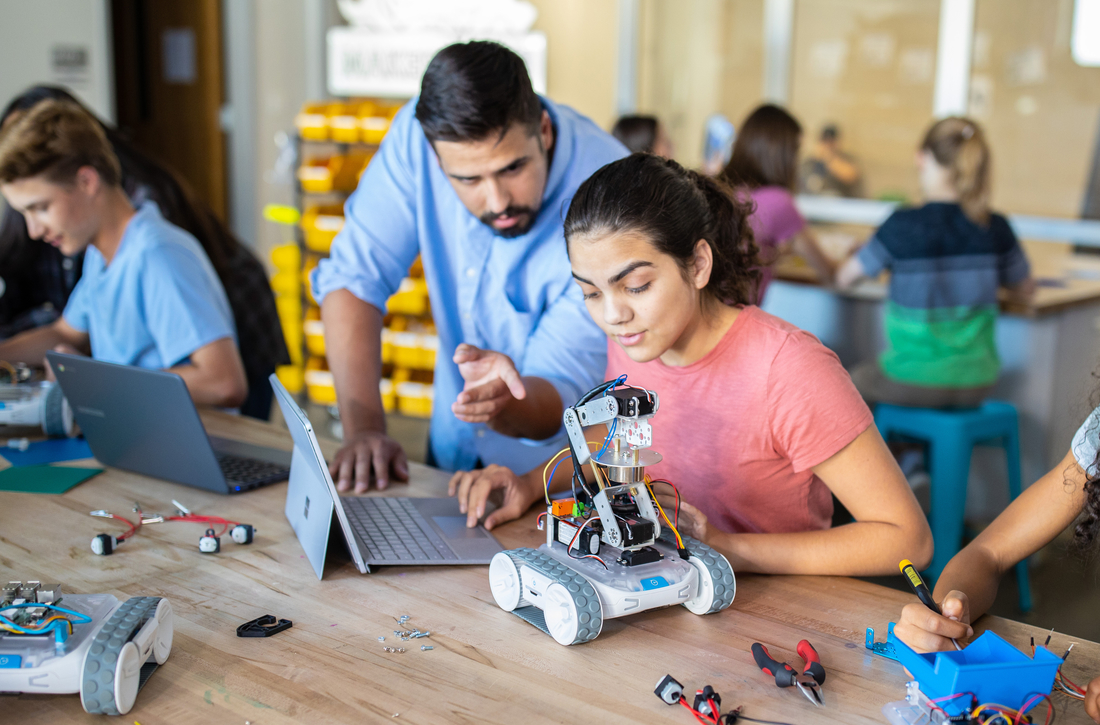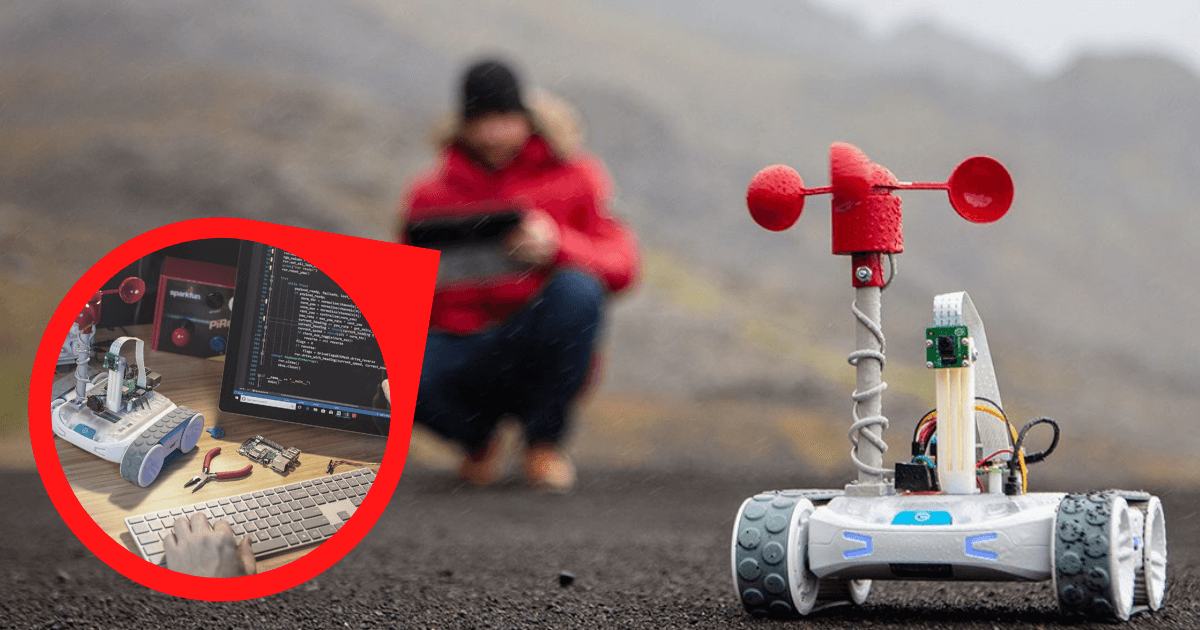The newest and, honestly, probably most impressive robot from Sphero, the RVR, is an awesome option for coding across grade levels. It boasts more power than previous Sphero models and students can truly embrace a hacker mentality. They can connect third-party hardware, like the Raspberry Pi, micro:bit, Arduino, and littleBits. The RVR can also do everything Sphero’s BOLT can do (minus programming the LED matrix). Coding opportunities for seasoned programmers are greatly expanded, however, thanks to this integration with the third-party technologies. Keep reading to learn more about the RVR and how it might fit into your educational offerings.
Sphero RVR features.
To start, the RVR is equipped with both light and color sensors—the latter of which is able to communicate to the robot that it should perform a pre-programmed action when it sees that color. Students can choose a color for the RVR to react to and build a program in the Sphero Edu app! Another cool part of the RVR is its on-board data port. This is what allows students to connect it to all of the third-party hardware. The RVR also features a USB port, allowing students to connect devices that can be plugged in to USB drives.
Sphero RVR: Designed for in-depth learning:
In creating the RVR, the Sphero team wanted to empower the students who use it to do the same kinds of exploring, problem solving, and programming in the classroom as their team does in the real world. Making these kinds of connections is crucial for building student agency and helping them understand the relevance of what it is they are learning. Plus, in terms of making it their own, students are able to remove the topper from the RVR and use the robot with or without this piece—whatever works best for the project they’re creating.
They also recently released their littleBits RVR Topper Kit. This kit contains a bunch of littleBits modules and accessories students can use to build devices and attach them to their RVR. Most notably, it comes with a littleBits micro:bit Adapter so students can program the littleBits circuits they attach to the robot. The kit also includes various input and output Bits to help make inventing, engineering, and coding with the RVR a blast! The RVR’s battery is also replaceable, which is a feature that’s not available with the BOLT. Both the battery and the mounting plate come in the RVR single packs and 5-packs and the toppers and treads can also be added, too.

Third-party add-ons with the Sphero RVR.
The Sphero team designed the RVR to be powerful, but with a low barrier to entry. That’s why it integrates smoothly across a large range of grades—anywhere from sixth to 12th. With this large range also comes a very high ceiling for the RVR and a ton of flexibility. In addition to the traditional programming languages students can use with Sphero robots, they can add Python to that list if they’re connecting a Raspberry Pi to the RVR, for example. With a Raspberry Pi connected, they can control the RVR’s sensors. Adding a micro:bit, however, can only be used to control the RVR’s lights and direction. Students can reference code on GitHub for supporting the use of Python with the RVR.
As always, there are plenty of support materials for educators when it comes to teaching with the RVR. There are tips and instructional resources available within the Sphero Edu app, including both getting started and troubleshooting guides. When first starting with the RVR, teachers can explore how to create programs within the app and learn the basics. It even shows the steps students could be taking to write their programs. This gives educators a head start on what it could be like using the RVR in the classroom.
Buying the Sphero RVR.
This computer science tool offers a ton of educational possibilities and upside for students in various grade levels. Its torque, usability, and affordability help make the RVR one of the most appealing robotics solutions for education. To learn more about it, check out our Eduporium Experiment and Tips & Tricks blogs. Or, check out some of the best alternative options we provide now that we're no longer able to offer it. If you have any questions about the RVR or any Sphero robots, feel free to reach out to us. Be sure to follow us on Twitter and Instagram, too.



